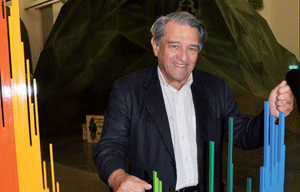NASA launches super-size rover to Mars
Updated: 2011-11-27 08:38
(Agencies)
|
|||||||||
|
 |
|
An Atlas 5 rocket lifts off from the launch pad in Cape Canaveral, Florida Nov 26, 2011. [Photo/Agencies] |
Curiosity's 7-foot arm has a jackhammer on the end to drill into the Martian red rock, and the 7-foot mast on the rover is topped with high-definition and laser cameras.
With Mars the ultimate goal for astronauts, NASA will use Curiosity to measure radiation at the red planet. The rover also has a weather station on board that will provide temperature, wind and humidity readings; a computer software app with daily weather updates is planned.
Curiosity's arrival next August will be particularly hair-raising.
In a spacecraft first, the rover will be lowered onto the Martian surface via a jet pack and tether system similar to the sky cranes used to lower heavy equipment into remote areas on Earth.
Curiosity is too heavy to use air bags like its much smaller predecessors, Spirit and Opportunity, did in 2004. Besides, this new way should provide for a more accurate landing.
Astronauts will need to make similarly precise landings on Mars one day.
Curiosity will spend a minimum of two years roaming around Gale Crater, chosen from among more than 50 potential landing sites because it's so rich in minerals. Scientists said if there is any place on Mars that might have been ripe for life, it may well be there.
The rover should go farther and work harder than any previous Mars explorer because of its power source: 10.6 pounds of radioactive plutonium. The nuclear generator was encased in several protective layers in case of a launch accident.
NASA expects to put at least 12 miles on the odometer, once the rover sets down on the Martian surface.
McCuistion anticipates being blown away by the never-before-seen vistas. "Those first images are going to just be stunning, I believe. It will be like sitting in the bottom of the Grand Canyon," he said at a post-launch news conference.
This is the third astronomical mission to be launched from Cape Canaveral by NASA since the retirement of the venerable space shuttle fleet this summer. The Juno probe is en route to Jupiter, and twin spacecraft named Grail will arrive at Earth's moon on New Year's Eve and Day.
Unlike Juno and Grail, Curiosity suffered development programs and came in two years late and nearly $1 billion over budget. Scientists involved in the project noted Saturday that the money is being spent on Earth, not Mars, and the mission is costing every American about the price of a movie.
"I'll leave you to judge for yourself whether or not that's a movie you'd like to see," said California Institute of Technology's John Grotzinger, the project scientist. "I know that's one I would."










